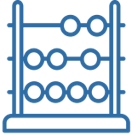The World Bank and UNESCO Institute for Statistics (UIS) have partnered to help countries strengthen their learning assessment systems, better monitor what students are learning in internationally-comparable ways and improve the breadth and quality of global data on education through the Initiative to improve global learning through data.
To monitor progress on SDG Indicator 4.1.1, the Global Bank of Items was designed as a global public repository of items, which countries can use to securely access globally shared items and generate learning data to assess reading and mathematics in grades 2 or 3 of primary education, at the end of primary education, and lower secondary education.
The Bank of Items is designed as a global public repository of items and once completely developed, will be governed as part of the World Bank and UIS Initiative to improve global learning through data, that countries can use to store and manage their own national assessment items, at the same time it will allow them to securely access additional globally shared items under an agreement of collaboration with UIS and the World Bank. It is intended to:
- Store both new and developed items following the digital development principles of open education technologies;
- Include an online crowdsourcing module for item development and validation;
- Incorporate already developed and equated items for cross-national assessments to use as initial anchors for cross-country comparability;
- Index already developed items from national and cross-national assessments based on the specific skills included in th Global Content Framework (for reading and mathematics) and Global Proficiency Framework (for reading and mathematics) and their corresponding item psychometric metadata; and
- Include existing guidelines on multiple-choice item development and validation for countries, item developers, and reviewers.
A strategic partnership framework is proposed to maximize the synergies among one or more academic institutions with technical expertise in the development of online open-source repositories for learning assessments, the comparative advantage and expertise of the World Bank in supporting and implementing international development projects, and the role UNESCO UIS as the custodian UN agency for SDG 4 data.
The items should be assessing either of the two domains covered by indicator 4.1.1, reading or mathematics. These 2 domains are composed of different learning areas:
 MATHEMATICS MATHEMATICS |
|||
| Reading comprehension | Number knowledge | ||
 Retrieving information Retrieving information |
 Number sense: Number sense: |
||
 Interpreting information Interpreting information |
○ counting, comparing, ordering | ||
 Reflecting information Reflecting information |
○ place value, rounding | ||
| Decoding |  Operations Operations |
||
| ○ adding, subtracting | |||
| ○ multiplying, dividing | |||
 Real world problems Real world problems |
|||
 Fractions Fractions |
|||
| Measurement | |||
 Measurement units, Measurement units, |
|||
 Area, perimeter, volume Area, perimeter, volume |
|||
 Time Time |
|||
| Statistical and probability | |||
 Data management Data management |
|||
| Geometry | |||
 Constructions Constructions |
|||
 Properties Properties |
|||
All items should be submitted at uis.lo@unesco.org in a Word document or any other editable format with as many information on the parameters of the items as possible (see below for description of parameters) and any relevant metadata document.
The layout of the item or stimulus should be clear and any graphics supporting the item or stimulus should also be submitted.
Parameters of items
| Item parameter | Description |
| Item | An item is a question as part of an assessment. |
| Correct answer of the item | |
| Author(s) and name for the item | The name of the item’s author and the date it was created. |
| Status of the item | The status of the item refers to the current use of the item in administered assessments: |
| Newly added, in piloting phrase, active, retired (for items which are no longer used in assessments submitted to student) | |
| Angoff ratings | The Angoff ratings are obtained using the Angoff Method. |
| Classical test theory statistics | These include the average score, item difficulty, and the test’s reliability. |
| Item response theory statistics | These include statistics on measurement error (standard error for example). |
| Link to the test blueprint | A test blueprint is an outline of the test which links the items to the learning goals. |
| Item history | The history of the item refers to the dates (year) when the item was used, reviews following its uses, and user-defined fields. |
Metadata
Any relevant metadata should also be submitted by providing (if available):
- Content area (use construct areas as previously presented)
- Source
- Prior administration of item (year, grade, assessment)
- Language of item
- Notes on copyright, permissions or ownership
For information, contact us at uis.lo@unesco.org